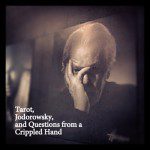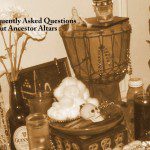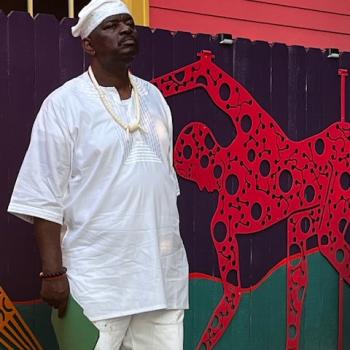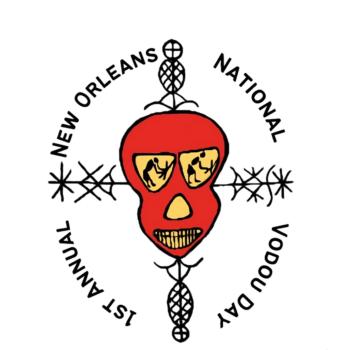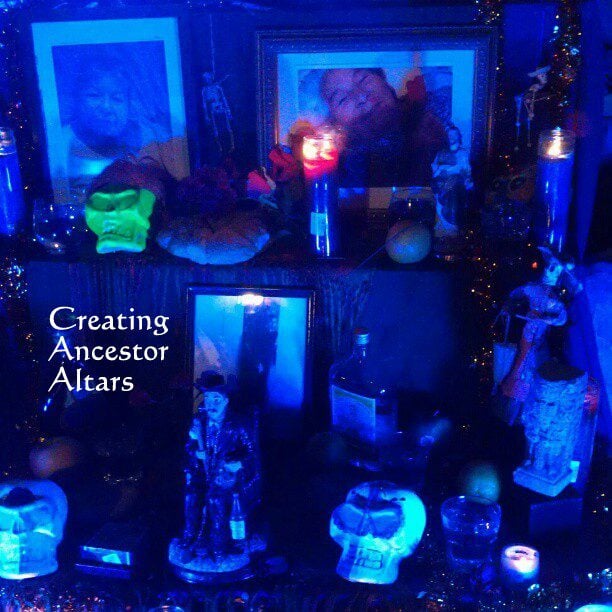
Ancestor Altars and shrines are a part of many different religions. They are present in Christian homes, Buddhist homes, Pagan homes, and even in Atheists’ homes. They can be as simple as a glass of water and a picture of Grandpa, or given an entire room to spread out in. Let me begin by making the distinction that altars are usually created for a specific purpose, while shrines are generally set up as a way of honoring what is represented. A ancestor shrine is a site to honor those who have gone before.
Cleansing of the space before you begin is highly recommended. In her article about ancestor reverence Oshun Austet reminds us that “Ifa teaches us that dirt and disorder can attract unwanted spiritual forces….Our external environment reflects out internal state of being and either supports resistance to change, or growth.” The room should be both physically and spiritually clean.
There is no wrong time to start an ancestor altar, a lot of my ancestors have birthdays this time of year. My grandfather, better known as Big Al, who I mentioned in the Sicilian St Joseph’s Day post, had his birthday on March 20. Much to my dismay the Pagan community has lost two very influential leaders this week, Donald Michael Kraig, and Judy Harrow. Artful coverage of their legacy can be found on The WildHunt. It is never to soon to begin an ancestor altar if you do not have one already, and please add to it whenever you have need.
Santeria/ La Regla Lukumi
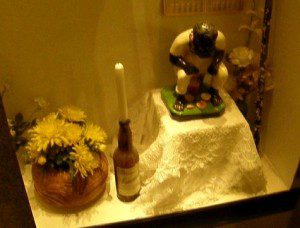
In Lukumi/Lucumi/Santeria an ancestor shrine is very often referred to as a Boveda. The word translates simultaneously to mean vault, safe, cavern and canopy of heaven (which is my favorite.) Some houses have Bovedas as a standard element, others do not. Some have them in a separate room, some have them in a separate building. It all depends on the rules of your Madrina and Padrino, or godparents. The most common elements if you would like to create one are a white cloth, 3 or other odd number of water glasses, white candle, flowers, pics/items from the person. In some Santeria/Lucumi spiritual houses they separate the males and females on the shrine. I spoke to a Babalawo this morning who says he likes to separate the different families on the shrine, which I think is a good idea in case they didn’t get along while they were alive. Beautiful photos of Santeria shrines can be found in Ysamur Flores- Pena’s book Santeria Garments and Altars.
Haitian Vodou
Haiti’s Vodou is known for some wild and wonderful shrines and altars. The Lwa or divinities are often represented with their own sacred space. The ancestors are known as The Barons, including Baron Samedi, Baron Lacroix, Maman Brigitte, and others. There are also The Gede or Gedeh, who are thought of as the nameless spirits. My godchildren like to invoke Gede Nibo, the spirit of farts… it’s funny until it isn’t. The most comprehensive museum exhibit I have ever seen about Haitian Shrines was UCLA’s Sacred Arts of Haitian Vodou installation. The accompanying book, Sacred Arts of Haitian Vodou, shows a full array of different ancestor shrines, as well as those for other Lwa. One of my favorite pieces was a phallic walking stick covered with a condom (the spirits need to stay safe too.)
New Orleans Voodoo
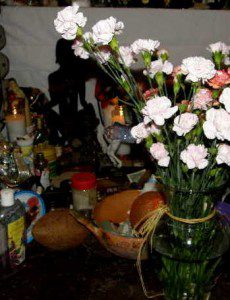
In New Orleans anything and everything can be present on an ancestor altar. Like the city itself shrines are a delicious gumbo of elements mixing and combing to make something unique and wonderful. I’ve seen anything and everything a person can hold dear from money to liquor to jewelry. Sometime petitions are placed beneath or around the wick of a candle to send messages and request to those who have passed on. Most common are offerings of money, liquor, photos, medals, and mass cards.
Additional information about altars, shrines and Voodoo can be found in my book Voodoo and Afro-Caribbean Paganism. More next time on the Voodoo Universe with Ancestor Shrine Frequently Asked Questions.


